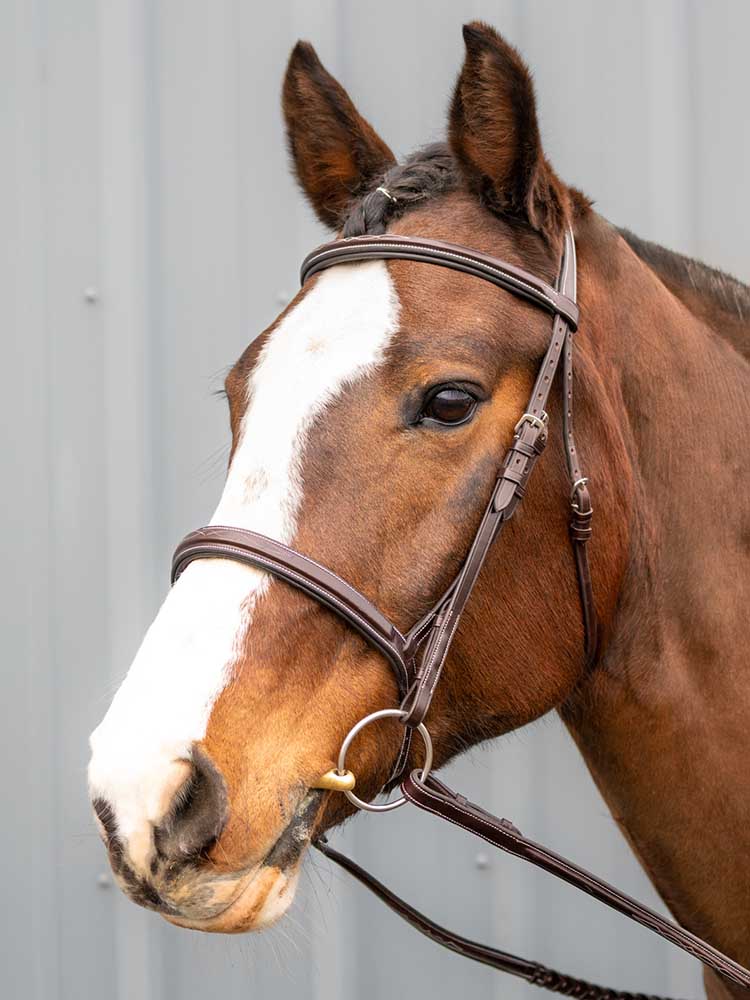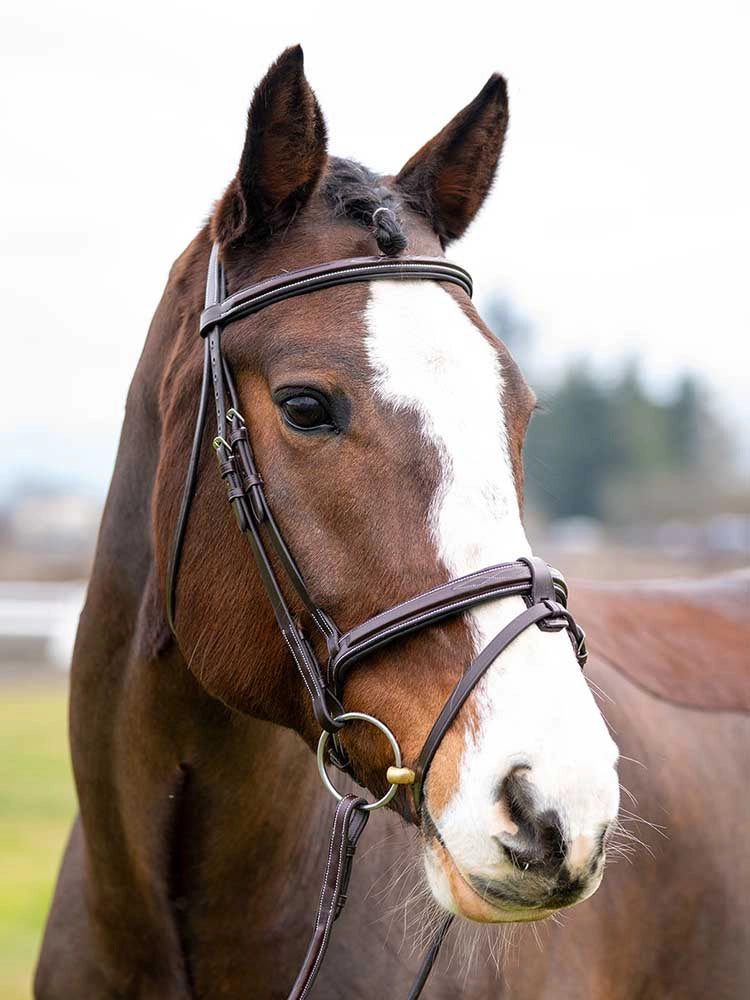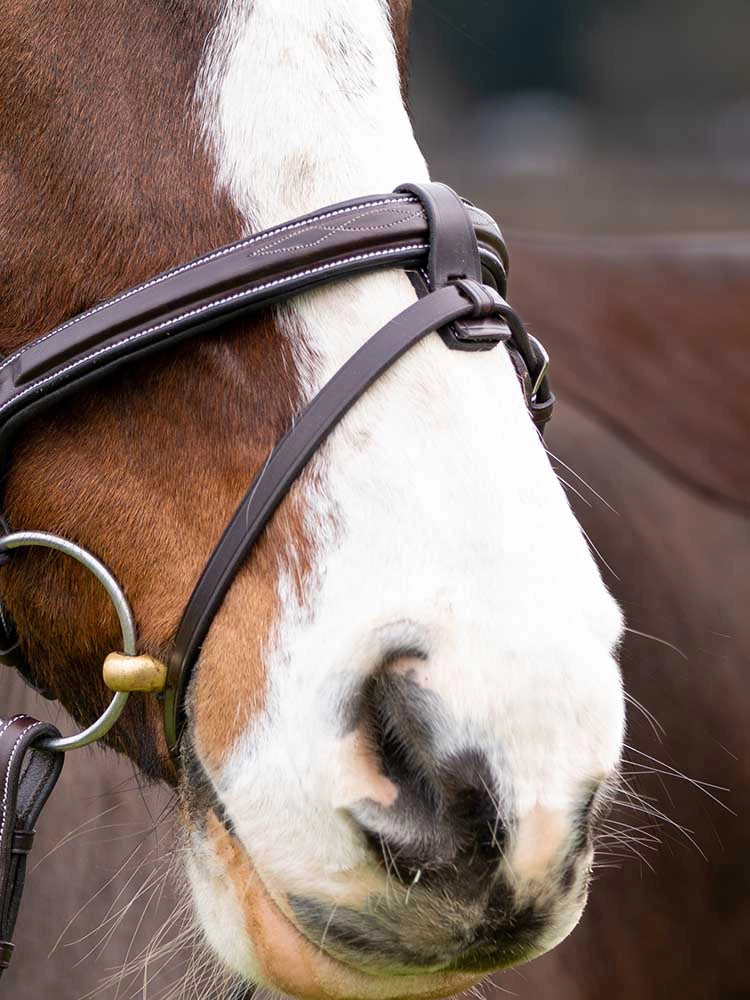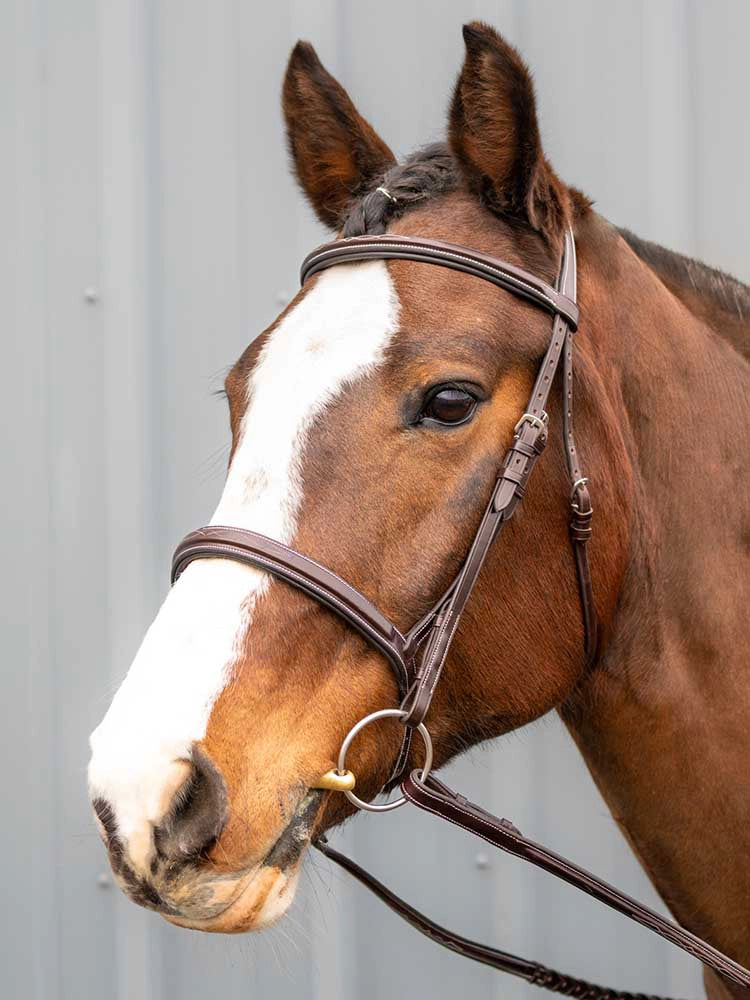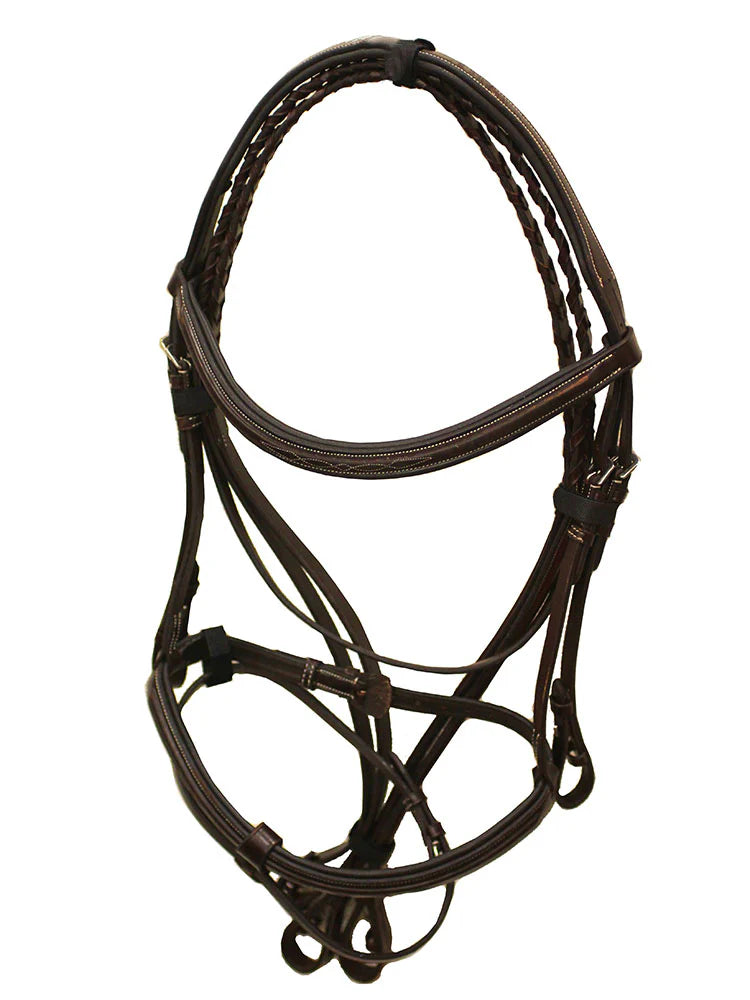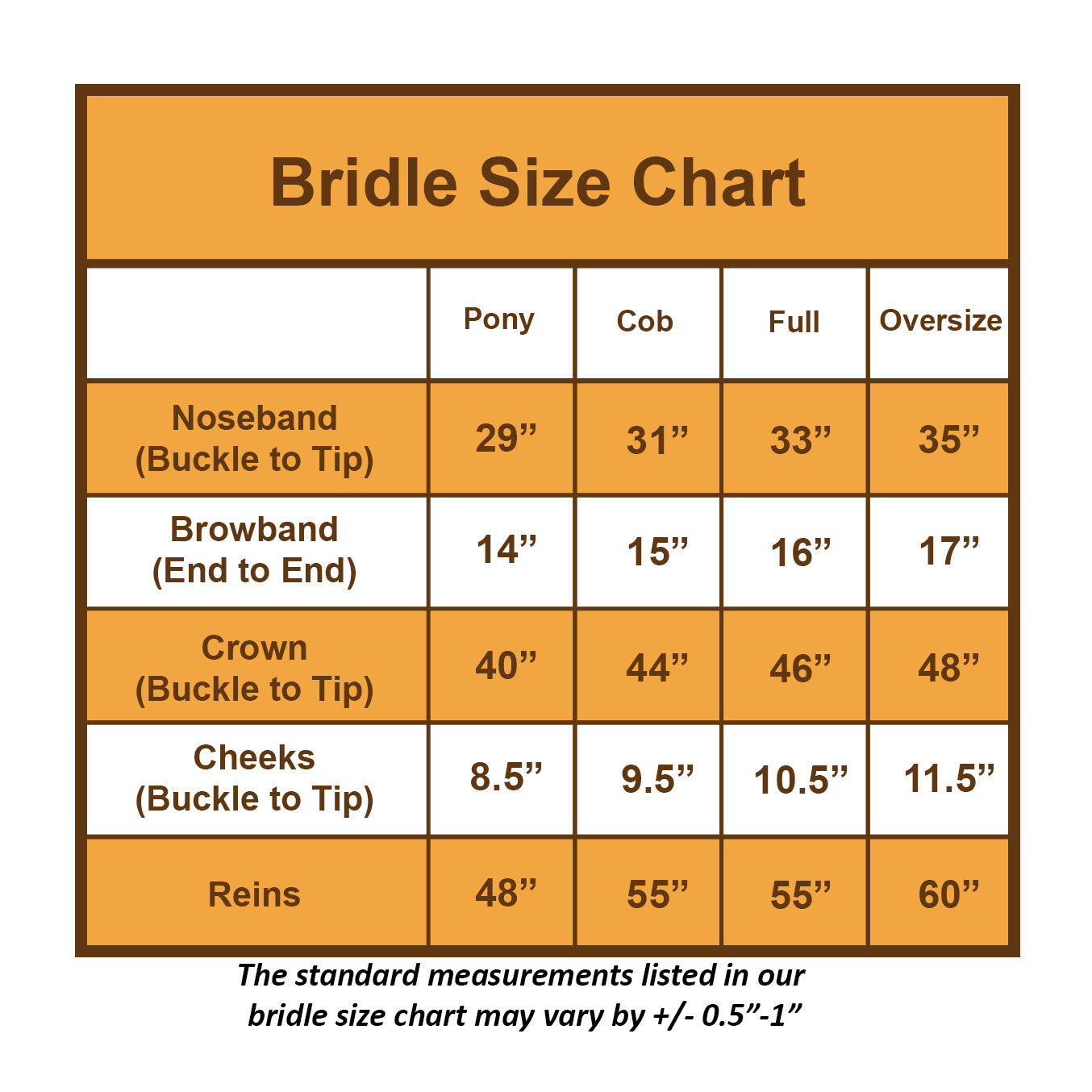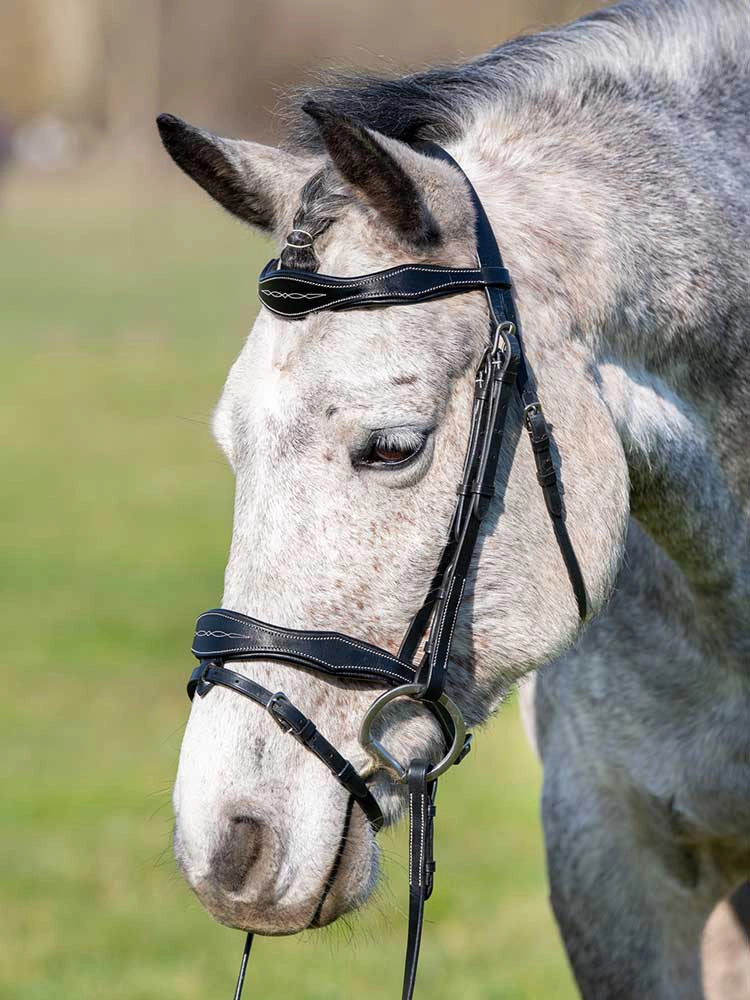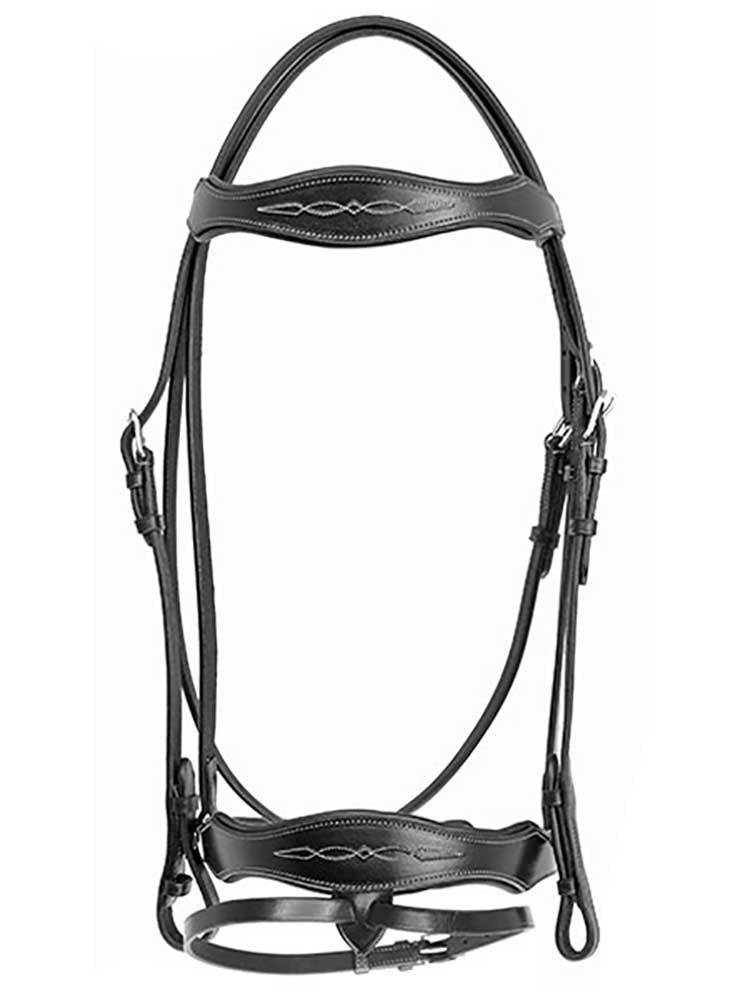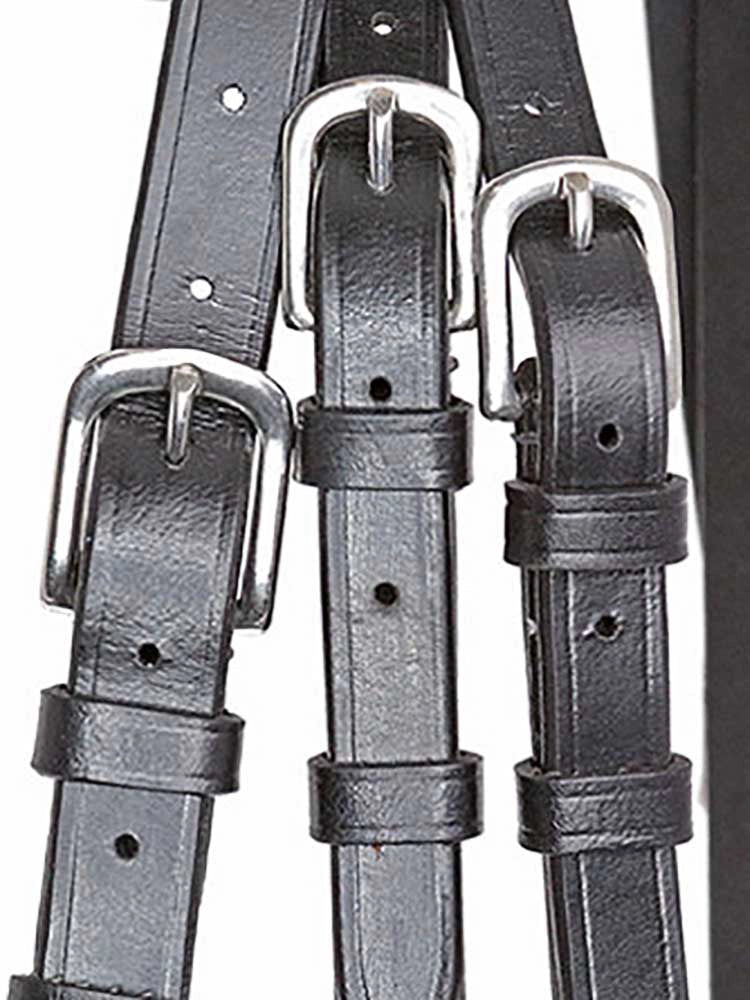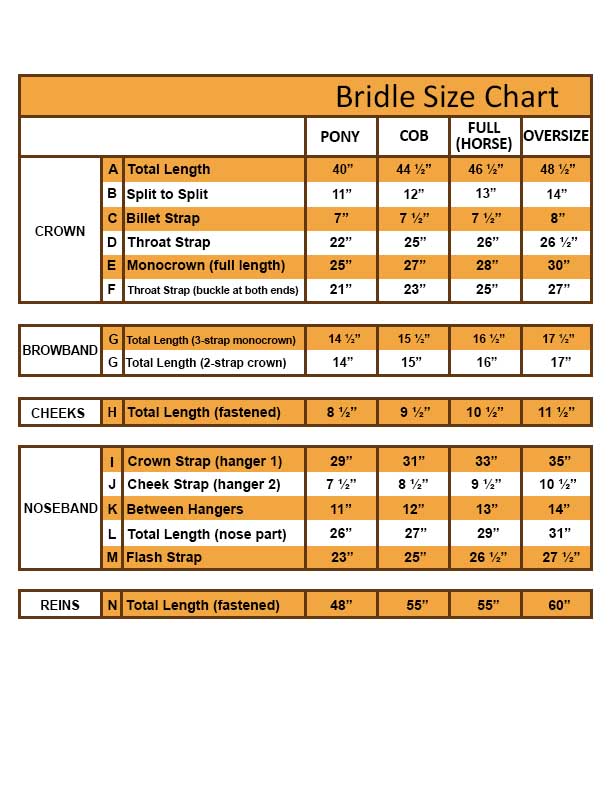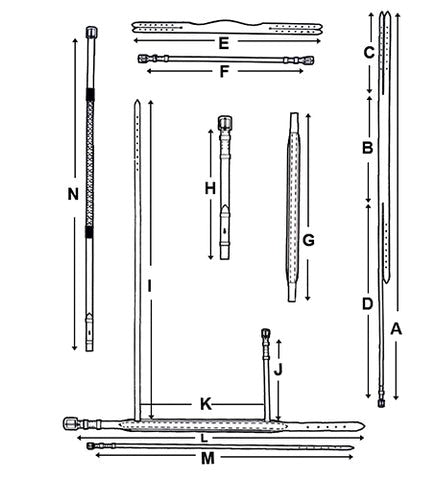Whether you're introducing a young horse to the bit or refining a seasoned dressage partner's contact, the right noseband can play a key role in communication and comfort. Among the many options available, the flash noseband is one of the most widely used and often misunderstood. In this guide, we'll break down what it is, how it works, and when it's the right choice for your horse.

What is a flash noseband?
A flash noseband is a combination of a traditional cavesson noseband with an additional, narrower strap that attaches at the front center and wraps around the horse's nose in front of the bit. The purpose of this design is twofold: it helps keep the horse's mouth closed and stabilizes the bit inside the mouth.
A bit of history
Allegedly invented in the 1800s by a stable hand working for King George III to control his horse Bold Flash, the flash noseband was designed to encourage bit acceptance while discouraging evasive behaviors like gaping, crossing the jaw, or getting the tongue over the bit.
As responsible equestrians, we are obligated to be sure the horse is comfortable with the bit. Acceptance of the bit is essential to the horse’s comfort while we direct him through the reins when we ride and train.
The lower flash strap applies gentle pressure in front of the bit but does not interfere with rein aids. It's most commonly used with snaffle bits and is a staple in many disciplines, especially dressage.
Why use a flash noseband?
Every piece of tack has a purpose, and the flash noseband is no exception. Here's what it's commonly used for:
-
Encourages the horse to accept the bit and chew softly, which stimulates saliva and keeps the mouth moist.
-
Prevents bit evasion such as opening the mouth, crossing the jaw, or placing the tongue over the bit.
-
Stabilizes the bit in the mouth, leading to clearer rein aids.
-
Supports young horses during early training phases by promoting calm, quiet mouth behavior.
Some horses accept the bit easily, and others do not... The bit will be the most comfortable for the horse if he keeps his mouth closed, so that his mouth stays moist and doesn't dry out.
Pro tip from Grewal Equestrian: Always assess your horse's individual temperament, anatomy, and training level before choosing any piece of tack.
Flash noseband vs. other nosebands
| Feature | Flash Noseband | Figure 8 Noseband | Drop Noseband |
|---|---|---|---|
| Bit Stabilization | Yes | Yes | Yes |
| Used in Dressage | Yes | No | Yes (lower levels) |
| Encourages Chewing | Yes | Yes | Yes |
| Suitable for Hunters | No | No | No |
| Appearance | Subtle, traditional | Modern, sporty | Lower on the face |
How to fit a flash noseband
Proper fit is essential for both comfort and effectiveness. Here's a step-by-step fitting guide:
-
Upper cavesson placement: The wider upper strap should lie about 1–2 fingers below the cheekbone. It should not press on the soft cartilage of the nose.
-
Flash strap adjustment: The lower flash piece should sit in front of the bit. It should be snug enough to close the mouth, but you should still fit 2 fingers underneath to allow chewing and tongue movement.
-
Avoid over-tightening: An overly tight flash can cause discomfort, resistances, and in extreme cases, injury. Tightening it too much would be cruel, cause your horse discomfort, and completely negate the reason to use a flash.
When to use a flash noseband
The flash noseband is especially useful in:
-
Young horse training, to prevent early habits like getting the tongue over the bit.
-
Dressage, where acceptance of the bit is critical through every level of training.
-
Jumping and eventing, for enhanced control and communication over fences.
Some trainers will use a flash noseband on young horses, when they are introducing the bit and starting them under saddle to ensure the young horse doesn't get his tongue over the bit, or cross his jaw, and to encourage holding the bit quietly.
It's not allowed in hunter classes or English pleasure and equitation rings, where subtlety and natural appearance take precedence.
The flash noseband has proven to be a valuable training tool, and an accepted noseband in jumping, dressage and eventing competitions. The success of using it is in the hands of the rider. Literally.
Flash nosebands in competition
Flash nosebands are legal in:
-
Dressage (FEI and national levels)
-
Eventing (dressage and jumping phases)
-
Show jumping
They are not allowed in:
-
Hunter under saddle
-
English pleasure
-
Equitation classes that follow strict hunter traditions
Always check specific competition rulebooks (USEF, FEI, etc.) before showing.
Is a flash noseband right for your horse?
As with all tack, the right choice depends on your individual horse's behavior, your training goals, and your discipline. If your horse:
-
Tends to resist the bit
-
Opens their mouth during work
-
Crosses the jaw or evades rein aids
...a properly fitted flash noseband could be the ideal training solution.
But remember, no piece of equipment is a fix-all. It's your thoughtful training and hands that make all the difference.
Where to buy the right flash noseband for your horse
Looking for a refined, handcrafted option? Explore Grewal Equestrian’s premium selection of English bridles with flash nosebands:
-
Shadow Creek Padded Flash Bridle: A stylish, padded option perfect for dressage or eventing.
-
Berlin Dressage Bridle: Elegant and ergonomic with a classic silhouette.
View all Grewal Equestrian English Bridles with Flash Nosebands

Flash noseband FAQs
What is a flash noseband used for?
To encourage bit acceptance, discourage mouth opening, and stabilize the bit without interfering with rein action.
Can flash nosebands hurt a horse?
Only if fitted incorrectly. A properly adjusted flash should allow two fingers' space and never pull the cavesson down.
Are flash nosebands allowed in dressage?
Yes, they're commonly used and accepted at nearly all dressage competition levels.
How tight should a flash noseband be?
Snug enough to prevent evasion, but always with room for two fingers underneath—never overly tight.












